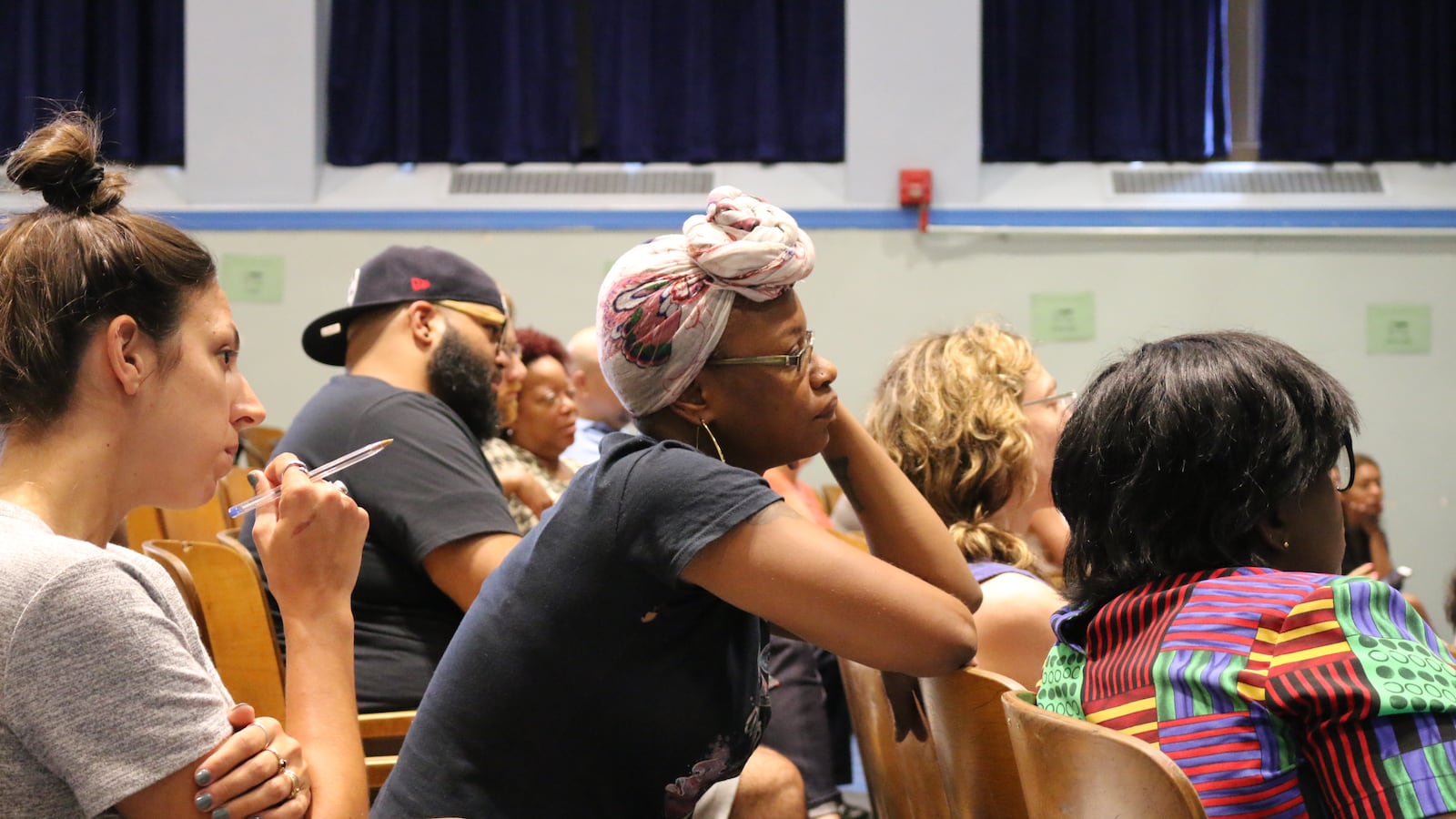A coalition of Brooklyn activists is asking the education department to hit pause on a plan to overhaul elementary school attendance zones, saying more community input is necessary.
Education department leaders are proposing to rezone seven elementary schools in Brooklyn’s District 15 in the hopes of meeting two goals: relieving overcrowding at some of the area’s most coveted schools, and encouraging diversity in the district’s segregated schools.
But parents and community advocates in Red Hook and Gowanus, two of District 15’s least affluent areas, are raising concerns. They include community leaders who have poured their energy into P.S. 676, the Red Hook Neighborhood School, and say the rezoning plans don’t adequately address the needs of their school, one of the city’s lowest-performing.
Last week, the coalition sent a letter asking the city and the local parent council, which decides on zoning changes, to delay any decision for six months. Some council members on Monday indicated openness to slowing down and education department officials visited P.S. 676 Tuesday to hear from families there.
“What about this school?” asked Latiayia Williams, a parent whose son attends P.S. 676. “Talk about what you can do to make this school better.”
The tension underscores the complexity of making changes in a deeply stratified school system. While some see reducing segregation as a top priority, others say existing school communities need more immediate improvements and infusions of resources. They worry that the rezoning plans prioritize some school communities at the expense of others — and that the process to discuss the proposals hasn’t extended evenly across the district.
“If the rezoning is to improve equity, it must be conducted through a fully participatory process considering all schools impacted by the rezoning process,” the letter read.
There are two proposals for District 15 on the table, both prompted by a 400-seat addition to P.S. 32 in Carroll Gardens. Under one plan, attendance zones would be redrawn to reduce enrollment at some schools that are bursting with too many students. That plan wouldn’t change the attendance boundaries for P.S. 676, which has far fewer students than it was built to accommodate.
The other plan, to remove attendance zones entirely in favor of a choice system that allows parents to apply to schools, would affect families zoned for P.S. 676 by giving them new options. That could put additional pressure on the school’s enrollment.
But the bigger concern Tuesday for families at P.S. 676 was not what the proposals might do to the school, but that the school seems largely left out of the district’s planning.
Tuesday’s meeting included sometimes frank admissions about the challenges at P.S. 676, which has cycled through principals, struggled to lift student performance on state tests, and has seen its budget shrink as students leave for better-regarded school options.
“The bottom line is that the school has carried a reputation that has hindered its progress,” said Principal Pricilla Figueroa. “And I think most recently, we’re changing that.”
Figueroa, who has led the school for about two years and took no position on the rezoning proposals, ticked through a long list of improvement efforts she and the school’s supporters have tackled, including new curriculums, training for counselors to help students with emotional challenges, the addition of after school programs, and more. There are also plans to potentially start a new focus on STEAM — science, technology, engineering, the arts, and math — with a maritime theme, making a virtue of the school’s proximity to the waterfront.
Still, the school has struggled to attract students, suggesting that many families in Red Hook are steering clear. And while some schools in the district are as much as 74 percent white, last year, the school had just two white students.
Edwin Pacheco, whose organization Red Hook Redemption provides volunteers who work in P.S. 676, said he signed the letter because the rezoning’s focus has felt like it is about filling the newly built seats at P.S. 32. He wishes the same attention would be paid to filling classrooms in Red Hook.
The rezoning, he said, feels like a tacit acknowledgement that it will be up to communities of color to integrate majority-white schools, rather than expecting white families to enroll in schools like P.S. 676. “For me, that’s not true equity,” he said.
Catherine McBride, who works with the Red Hook Initiative and helped spearhead the drafting of the letter, said P.S. 676 needs to be a priority, “just like you’re honoring the needs of P.S. 32.”
“In our opinion, you should be centering the highest-need school,” she said. “How is this rezoning addressing this gap?”
Parent leaders on the Community Education Council recently weighed how to move forward with the proposal. It’s up to the education department to make a recommendation for any new zones lines, but ultimately the council votes on whether to accept or reject the redrawn boundaries.
At a meeting on Monday, a few members seemed inclined to take more time and heed the request of advocates who have criticized the way feedback is being collected, saying study groups and one-on-one interviews would be more effective than the large group format that has been relied upon.
Some council members called for a process like the one that was recently used to create an integration plan for the district’s middle schools, which the education department hired an independent consultant to help lead. The current process could set the tone for other planned rezonings, like an expected one in Park Slope and Sunset Park.
“To do a meaningful approach, we need more resources and we need more time,” said council member Francisca Montaña.
The education department has said it plans to present its final proposal in early fall, and a CEC vote would need to take place within 45 days. The changes are slated to take effect in the 2020-2021 school year.

